A drone inspection utilizes aerial drones to capture and analyze visual data, often for assessing structures, terrains, or equipment.
Introduction
The concept of drones has revolutionized multiple sectors, offering a fresh perspective on old methodologies. Traditionally, inspections involved human personnel performing evaluations, often risking their safety, especially in hard-to-reach areas. The introduction of drones has transformed the entire landscape, promising efficiency, safety, and precision in its wake. In this section, we’ll delve deep into what drone inspection means and how inspection techniques have evolved over time.
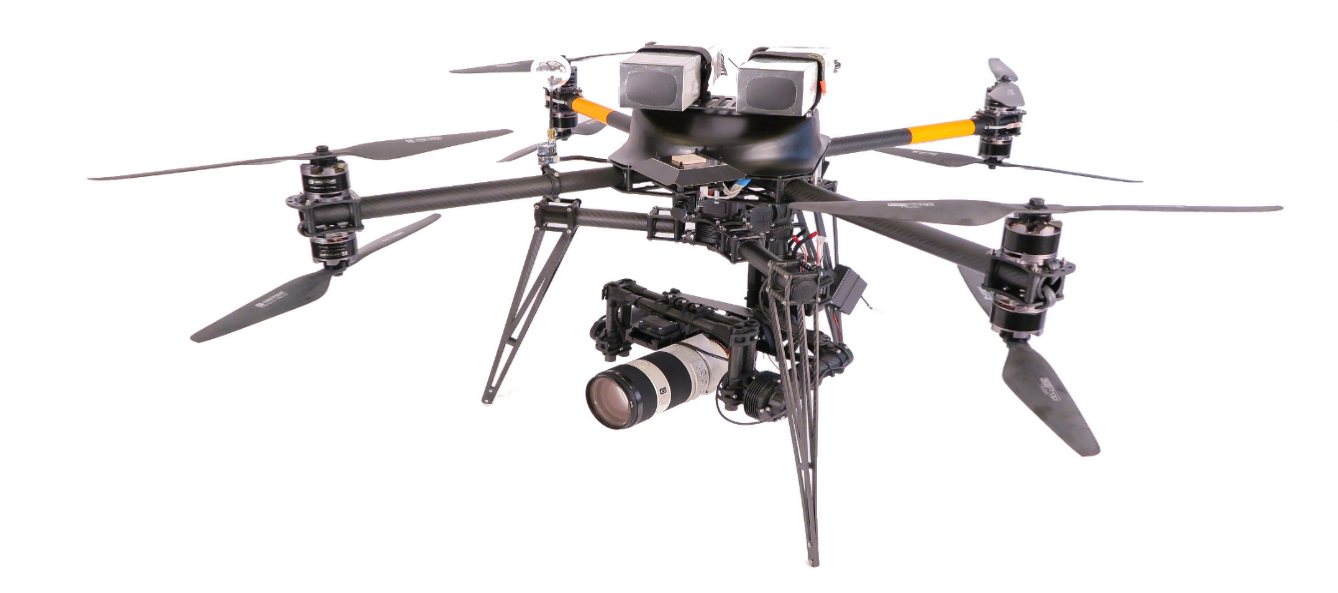
Definition of Drone Inspection
Drone inspection refers to the use of drones or unmanned aerial vehicles (UAVs) to visually survey and examine structures, territories, or specific areas for a particular purpose. These can range from analyzing the structural integrity of a building, monitoring agricultural fields for pests, or even evaluating the health of natural habitats. The key feature that stands out in drone inspection is the ability to obtain data from vantage points that were previously inaccessible or dangerous for humans.
The Evolution of Inspection Techniques
Historically, inspection processes were tedious, often requiring manual labor, scaffolding setups, or even helicopters for aerial views. These traditional methods posed potential risks, were time-consuming, and sometimes lacked accuracy. Enter the world of drones. The first recorded use of a drone dates back to the early 20th century, though it wasn’t until the 21st century that we began to witness its profound impact on various industries. Modern-day drones, equipped with high-definition cameras, sensors, and advanced software, offer a more thorough, accurate, and efficient inspection process, eliminating the bulk of challenges faced by earlier techniques.
Types of Drones Used for Inspection
In the rapidly expanding world of drones, various designs and functionalities cater to specific tasks. For inspection purposes, certain drone designs prove more efficient than others due to their flight dynamics, endurance, and capability to house various sensors. Understanding these categories can greatly benefit those looking to implement drones in their inspection processes. Below we explore the three primary types of drones that professionals commonly use for inspections.
Multi-Rotor Drones
Multi-rotor drones have become synonymous with the general perception of what a drone looks like. Characterized by multiple rotors, typically four (quadcopters), six (hexacopters), or eight (octocopters), these drones offer great stability and maneuverability. This stability is crucial for inspections as it allows the drone to hover in a single spot, making it perfect for close-up inspections. However, they have a limitation in terms of battery life and flight time, often maxing out at 30 minutes.
Fixed-Wing Drones
Unlike their multi-rotor counterparts, fixed-wing drones have a completely different design, reminiscent of traditional airplanes. These drones cannot hover; instead, they require forward motion to stay airborne. This design grants them a significantly longer flight time, often several hours, making them ideal for inspecting large areas, like pipelines, large agricultural fields, or extensive infrastructure projects. However, their design makes them less suitable for close, detailed inspections, as they can’t hover in one place.
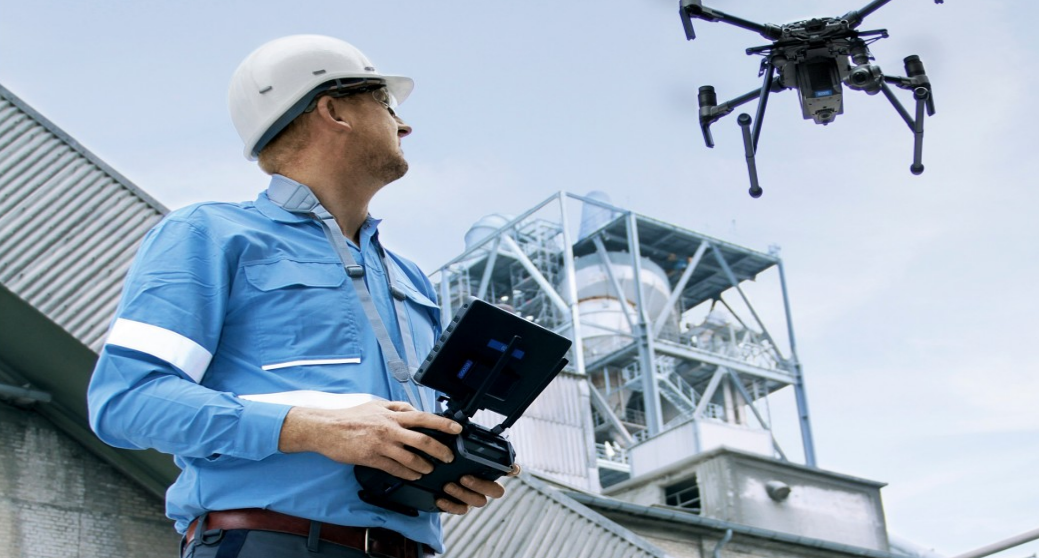
Hybrid Drones
The best of both worlds, hybrid drones combine elements from both multi-rotor and fixed-wing designs. These drones can take off and land vertically (like multi-rotors) and switch to a fixed-wing mode for more extended, more efficient flight. Such versatility makes them suitable for a range of inspection tasks. From detailed assessments of a particular structure to covering vast expanses of land, hybrid drones cater to various inspection needs, bridging the gap between the capabilities of multi-rotor and fixed-wing drones.
Benefits of Using Drones for Inspection
Incorporating drones into inspection processes represents a paradigm shift from traditional methods, offering myriad benefits that drive industries toward rapid adoption. From safety enhancements to cost-saving measures, drones are setting new standards in the inspection arena. Let’s delve deeper into the advantages that make drones an indispensable tool for modern inspection needs.
Improved Safety
Safety remains a paramount concern in any industry, especially when it comes to inspection tasks. Traditional methods often expose workers to risky situations, such as climbing tall structures, traversing unstable terrains, or inspecting damaged infrastructure. Drones eliminate the need for human presence in these potentially dangerous scenarios. By allowing inspections from a safe distance, drones reduce the likelihood of workplace accidents and ensure that personnel remain out of harm’s way.
Cost-Effective Solutions
When considering the costs associated with traditional inspection methods – equipment rentals, labor hours, potential downtime, and even insurance premiums in high-risk scenarios – drones emerge as a highly cost-effective alternative. They can drastically reduce the manpower and resources required, especially in large-scale or hard-to-access areas. Moreover, the data collected is often more detailed, reducing the need for repeat inspections. In the long run, this translates to considerable cost savings for businesses.
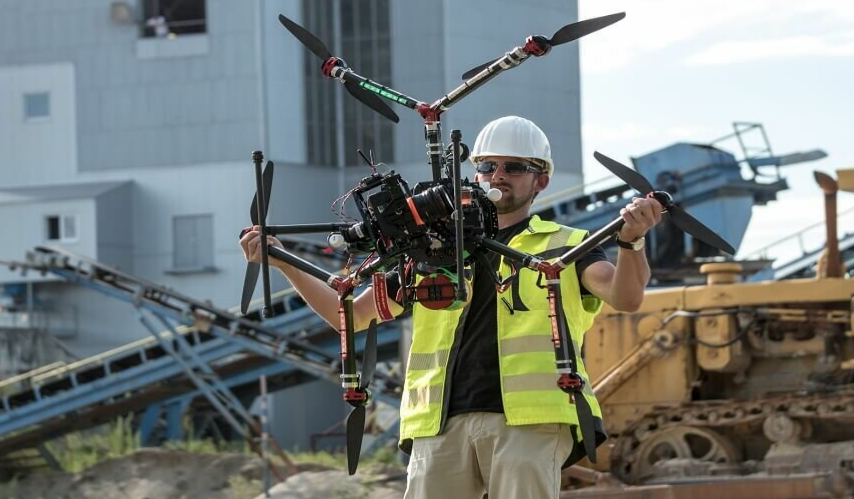
Accessibility to Difficult Locations
Certain locations pose significant challenges for inspectors. Think of wind turbines, offshore oil rigs, or dense forests. Drones offer unparalleled access to these hard-to-reach spots. Equipped with advanced cameras and sensors, they can maneuver through tight spaces, fly at varying altitudes, and provide a bird’s-eye view of vast terrains. This accessibility ensures that no area remains out of bounds for thorough inspections.
Enhanced Data Accuracy
The advent of technology in drones, from high-resolution cameras to sophisticated sensors, ensures that the data collected is of the highest quality. Drones can capture real-time footage, utilize thermal imaging to detect flaws, and even integrate with software that aids in immediate analysis. This means businesses receive accurate, detailed insights, enabling them to make informed decisions faster. Compared to manual inspections, drones offer a higher degree of data accuracy, leaving less room for human error.
Key Applications of Drone Inspections
Drones, with their ability to access hard-to-reach locations and capture high-quality data, have found applications in a multitude of sectors. Their versatility ensures that industries, ranging from construction to agriculture, benefit immensely from their adoption. Here, we’ll explore some of the key areas where drone inspections are making a significant impact.
Infrastructure & Building Inspections
The realm of infrastructure and building inspections has seen substantial improvements with the introduction of drones. Skyscrapers, bridges, dams, and historical monuments often require periodic inspections to ensure structural integrity. Traditional methods can be time-consuming and might even overlook certain aspects. Drones, however, provide a comprehensive view, capturing every nook and cranny. For instance, checking a high-rise for facade damages or assessing the condition of a bridge’s underside becomes straightforward with drones. They not only speed up the process but also ensure that detailed data is available for analysis.
Energy & Power Line Inspections
Monitoring vast stretches of power lines or inspecting large energy installations, like solar farms or wind turbines, poses its own set of challenges. Drones equipped with thermal cameras can detect issues like overheating components in electrical installations, saving both time and potential hazard-related costs. In wind farms, they can inspect the blades and towers of wind turbines, ensuring they operate efficiently. By embracing drones, the energy sector ensures better maintenance, leading to uninterrupted power supply and enhanced safety.
Agricultural Field Surveys
Modern agriculture leans heavily on technology to optimize yields and manage resources. Drones play a pivotal role in this transformation. With the ability to survey vast fields within minutes, drones can monitor crop health, assess soil conditions, and even detect pest infestations. Integrating with systems that analyze the data in real-time, farmers can make swift decisions, whether it’s related to irrigation, fertilization, or pest control. This approach not only improves crop yields but also ensures sustainable farming practices.
Environmental Monitoring
Our planet’s health demands continuous monitoring, be it forest covers, melting glaciers, or wildlife habitats. Drones provide an unobtrusive way to keep an eye on these critical areas. Researchers can assess deforestation rates, monitor wildlife without disturbing their natural behaviors, and even measure the effects of climate change in remote locations. By using drones for environmental monitoring, we obtain a clearer picture of our planet’s health, guiding conservation efforts in the right direction.
Technologies and Tools in Drone Inspections
As the demand for drone inspections grows, so does the suite of technologies and tools that empower these aerial devices. These technologies not only enhance the capabilities of drones but also ensure that the data gathered is of the highest quality, leading to precise and actionable insights. From capturing vivid visuals to generating topographical maps, let’s explore the key technologies driving the success of drone inspections.
High-Resolution Cameras
The primary tool in most drone inspections, high-resolution cameras, enable drones to capture crystal-clear images and videos from great heights. These cameras provide unparalleled detail, ensuring that even the minutest of defects or changes in a structure or terrain are evident. The ability to zoom into specific areas without compromising on image quality means that inspectors can spot potential issues without the need for a closer, manual inspection.
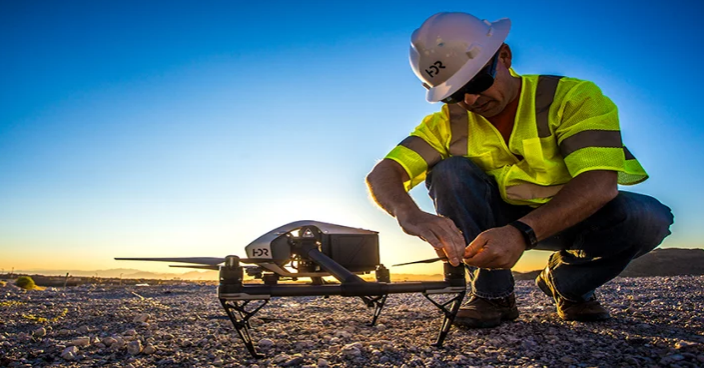
Thermal Imaging
Thermal imaging cameras detect heat, making them invaluable for inspections, especially in sectors like energy and agriculture. By identifying hotspots on power lines or machinery, they can pinpoint malfunctioning components or potential fire hazards. In agriculture, thermal imaging can detect variations in soil temperature or identify areas in a field that might require more water, aiding in efficient irrigation strategies. This technology offers a perspective that the human eye cannot see, bringing potential problems to light.
LiDAR (Light Detection and Ranging)
LiDAR stands out as a game-changer in topographical mapping and forestry. Emitting rapid light pulses, LiDAR measures the time taken for these pulses to return after hitting an object. This allows for the creation of highly accurate three-dimensional models of landscapes, buildings, or forests. Industries like mining, forestry, and urban planning benefit immensely from the detailed and accurate maps generated by drones equipped with LiDAR.
Advanced Software for Data Analysis
Hardware capabilities are just one side of the coin. The data collected by drones requires processing and analysis, and this is where advanced software steps in. These software solutions can stitch together images to create comprehensive maps, analyze thermal data to provide actionable insights, or even use artificial intelligence to detect structural defects. By integrating advanced software with drone-collected data, industries can make well-informed decisions swiftly, enhancing efficiency and productivity.
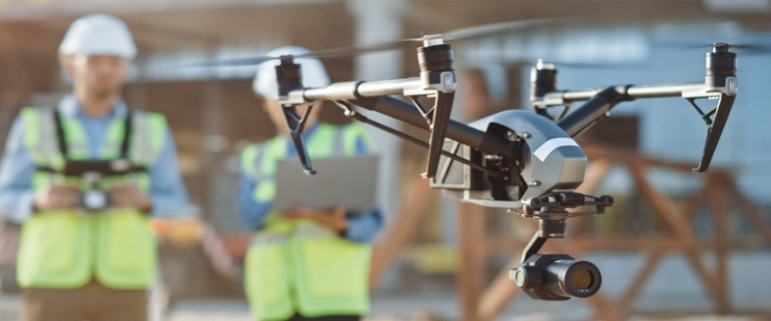
Challenges and Concerns
While drones revolutionize inspection methodologies across various sectors, they come with their own set of challenges and concerns. It’s essential to acknowledge these potential hurdles, as they impact the successful integration of drones into mainstream inspection practices. This section delves into some of the predominant challenges and considerations surrounding drone inspections.
Regulatory Restrictions
One of the most pressing concerns for drone operators is the ever-evolving landscape of regulations. Governments worldwide strive to balance the benefits of drones with safety and privacy concerns. This often leads to stringent rules around no-fly zones, altitude restrictions, and operational hours. Moreover, pilots might need specific licenses or certifications, and the drones themselves might need to meet particular standards. Staying updated with these regulations and ensuring compliance is crucial for anyone looking to leverage drones for inspections.
Weather Dependencies
Drones, for all their technological advancements, remain vulnerable to nature’s elements. Adverse weather conditions like heavy rain, strong winds, or fog can severely hamper a drone’s ability to function optimally. While rain might damage electronic components, strong winds can cause instability, leading to blurred images or even crashes. Operators need to be acutely aware of weather forecasts and be prepared to adjust their schedules accordingly. Despite advancements in drone design, weather remains a significant variable in the equation.
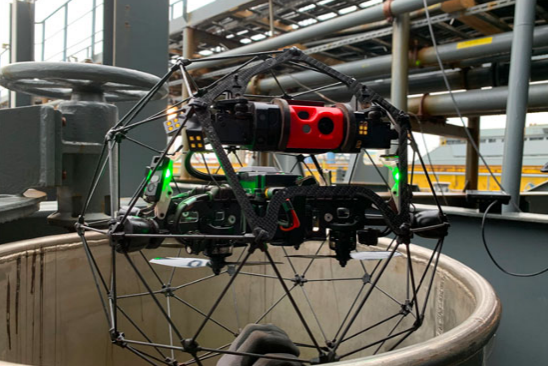
Data Security Concerns
In a digitized world, data security takes center stage, and drones are no exception. The vast amounts of data they collect, whether imagery, thermal readings, or LiDAR outputs, need protection from potential cyber threats. Unauthorized access to this data might lead to breaches of privacy, industrial espionage, or even misuse by malicious entities. Employing robust data security measures and encryption techniques is essential to safeguard the integrity of information and maintain stakeholder trust in drone inspections.
The Future of Drone Inspections
The realm of drone inspections continues to evolve at a rapid pace. With each passing year, technological advancements, innovative applications, and industry-wide acceptance propel drones to newer heights in the inspection ecosystem. The future looks promising, with a blend of cutting-edge technologies and expanding applications that promise to make drone inspections even more integral across various domains. Let’s dive into the horizon and explore what the future holds for this exciting field.
Integration with AI and Machine Learning
The amalgamation of drone technology with Artificial Intelligence (AI) and Machine Learning (ML) promises to redefine the way inspections take place. Instead of just collecting data, drones of the future will analyze it in real-time. AI-driven drones could autonomously detect defects, abnormalities, or patterns in inspected sites, making decisions on the fly. For instance, drones might automatically zoom into areas that seem anomalous or categorize data into actionable insights without human intervention. This fusion of technologies will not only streamline inspection processes but also ensure more accurate and timely results.
Expanding into New Industries
While many sectors already leverage drone inspections, there are still untapped industries and applications. From deep-sea exploration using underwater drones to urban planning in smart cities, the potential is vast. As drones become more adaptable and specific to certain tasks, industries that once deemed drone inspections unfeasible might start incorporating them. For instance, healthcare could see drones inspecting large hospital infrastructures or monitoring air quality in real-time. The spectrum of possibilities keeps expanding, making it an exciting time for drone applications in unconventional sectors.
Improvements in Drone Technology
The drones of tomorrow won’t just be smarter; they’ll be more resilient, efficient, and versatile. Future drones might feature enhanced battery lives, allowing for longer flight durations. We could also see innovations in drone design, making them more aerodynamic, weather-resistant, and even capable of night-time operations with advanced infrared technologies. Additionally, as the demand for drone inspections grows, there might be a push for creating drones tailored to specific industry needs, ensuring optimal performance. With such advancements in drone technology, the future landscape of inspections will undergo a profound transformation.
